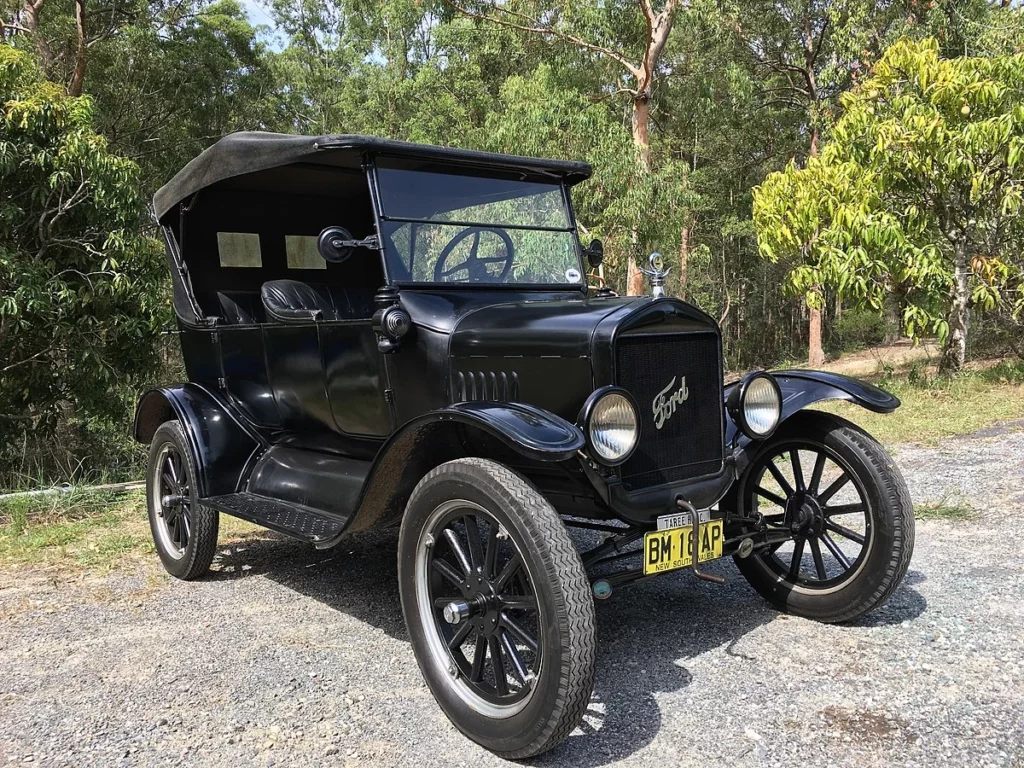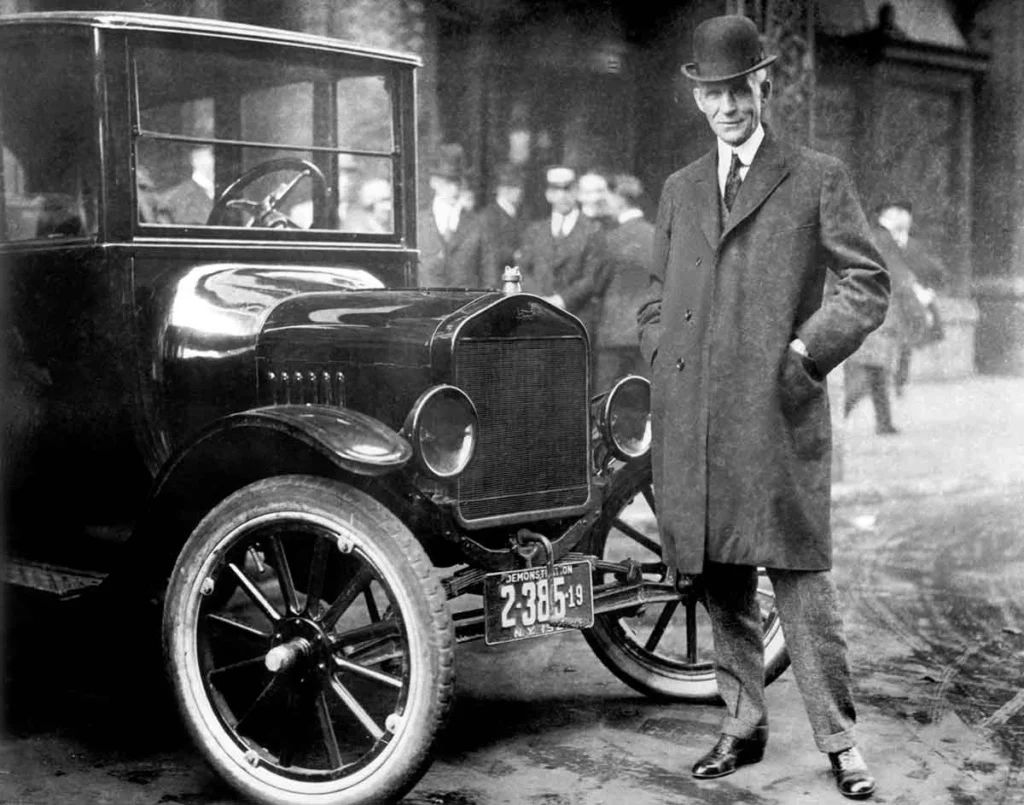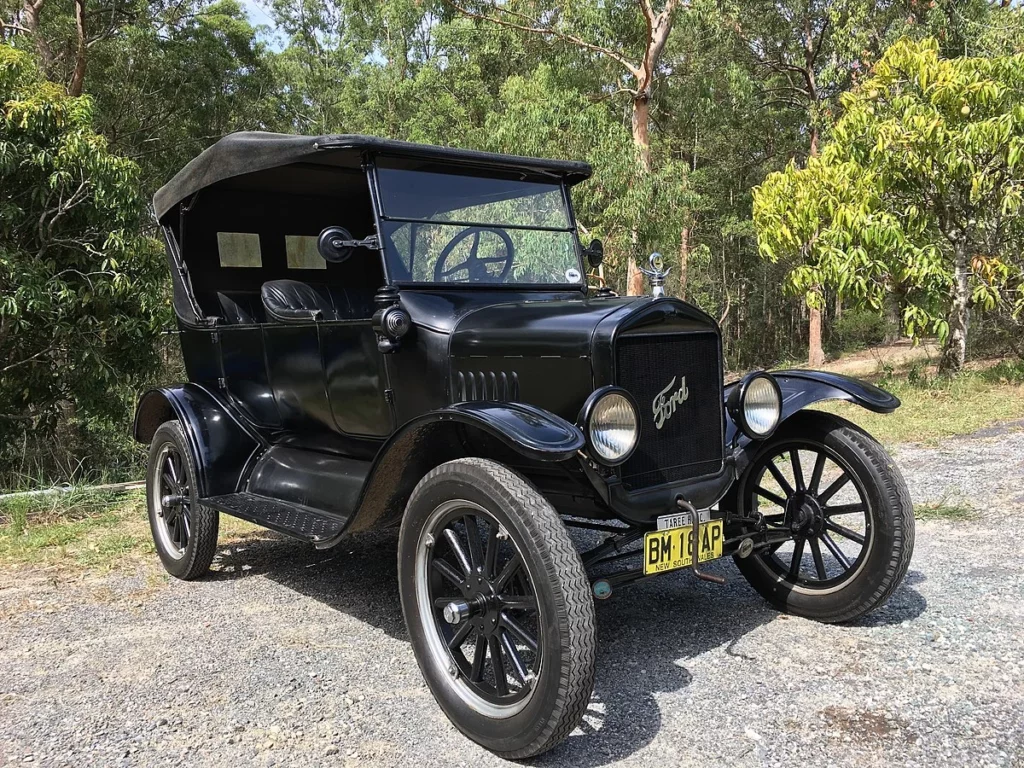Introduction

The Ford Model T, also known as the “Tin Lizzie,” is one of the most iconic automobiles in history. Produced by the Ford Motor Company from 1908 to 1927, the Model T revolutionized the way cars were made, sold, and used. More than just a vehicle, it was the first car that became accessible to the general public, transforming transportation and society in the process.
Birth of the Ford Model T

At the beginning of the 20th century, cars were considered luxury items, affordable only to the wealthy. Henry Ford, the founder of the Ford Motor Company, had a vision to create a reliable, affordable car for the average American. In 1908, that vision came to life with the introduction of the Ford Model T.
The Model T was designed to be simple, durable, and easy to operate, making it ideal for rural and urban areas alike. With a 20-horsepower engine and a top speed of around 45 miles per hour, it was powerful enough for everyday use while being inexpensive to maintain.
The Assembly Line: A Manufacturing Revolution

One of the key innovations that made the Model T affordable was Ford’s introduction of the moving assembly line in 1913. Before the assembly line, cars were built by skilled craftsmen who would construct each vehicle individually, making the process slow and costly.
With the assembly line, Ford revolutionized the manufacturing process by breaking it down into smaller, repetitive tasks. Each worker focused on one task, and the car moved along the line from one station to the next. This approach significantly reduced production time and costs, allowing Ford to lower the price of the Model T year after year.
By the mid-1920s, the price of a new Model T had dropped to less than $300, making it affordable for millions of Americans.
How the Ford Model T Changed Society
The Ford Model T wasn’t just a car; it was a symbol of freedom and mobility. For the first time, ordinary people could afford to own a vehicle, which had a profound impact on society.
- Rural Mobility: The Model T allowed farmers and rural families to travel to nearby towns quickly and efficiently, bridging the gap between rural and urban areas.
- Economic Growth: The car created jobs, not only in the auto industry but in related sectors like road construction, oil, and tourism. The widespread adoption of the Model T contributed to the economic boom of the 1920s.
- Cultural Shift: The car became a symbol of independence and progress. It changed the way people worked, lived, and socialized, giving them more control over their time and movement.
Legacy of the Ford Model T
By the time production ended in 1927, Ford had built over 15 million Model Ts, making it one of the best-selling cars of all time. The legacy of the Model T is far-reaching. It set the standard for affordable, mass-produced cars and paved the way for the modern automotive industry.
Henry Ford’s vision of “a car for every American” came true with the Model T, and its influence is still felt in the way cars are designed, manufactured, and marketed today.
Conclusion
The Ford Model T wasn’t just a car; it was a revolution on wheels. It democratized transportation, reshaped industries, and forever changed the social and economic landscape of the United States. Its impact can still be seen today, not only in the automotive industry but in the way we live our lives.
